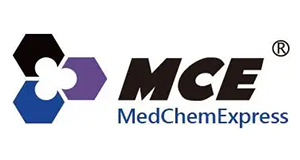N-Acetyl-L-tryptophan, CAS 1218-34-4
N-Acetyl-L-tryptophan, CAS 1218-34-4
SKU
MEXHY-W011978-10.1
Packaging Unit
10 mM/1 ml
Manufacturer
MedChemExpress
Availability:
loading...
Price is loading...
Product Description: N-Acetyl-L-tryptophan is an antagonist of the neurokinin-1 receptor (NK-1R), disrupting the binding of substance P (SP) to NK-1R. This action provides neuroprotective effects, improving memory deficits and motor impairments. N-Acetyl-L-tryptophan is also an inhibitor of cytochrome c (Cytochrome c), and it exerts antioxidant and anti-inflammatory effects by inhibiting the expression of IL-1β and the activation of caspase-1. N-Acetyl-L-tryptophan holds promise for research in neurodegenerative and inflammatory diseases[1][2][3][4].
Applications: Metabolism-protein/nucleotide metabolism
Formula: C13H14N2O3
References: [1]Sirianni A C, et al. N‐acetyl‐l‐tryptophan, but not N‐acetyl‐d‐tryptophan, rescues neuronal cell death in models of amyotrophic lateral sclerosis[J]. Journal of Neurochemistry, 2015, 134(5): 956-968./[2]Li H, et al. Inhibition of excessive mitophagy by N-acetyl-L-tryptophan confers hepatoprotection against Ischemia-Reperfusion injury in rats[J]. PeerJ, 2020, 8: e8665./[3]Thornton E, et al. The NK1 receptor antagonist N-acetyl-L-tryptophan reduces dyskinesia in a hemi-parkinsonian rodent model[J]. Parkinsonism & related disorders, 2014, 20(5): 508-513./[4]Fernandes J, et al. N-acetyl-L-tryptophan, a substance-P receptor antagonist attenuates aluminum-induced spatial memory deficit in rats[J]. Toxicology Mechanisms and Methods, 2018, 28(5): 328-334.
CAS Number: 1218-34-4
Molecular Weight: 246.266
Compound Purity: 99.80
Research Area: Inflammation/Immunology; Neurological Disease
Solubility: DMSO : 100 mg/mL (ultrasonic)
Target: Caspase;Endogenous Metabolite;Interleukin Related;Mitochondrial Metabolism;Neurokinin Receptor
Applications: Metabolism-protein/nucleotide metabolism
Formula: C13H14N2O3
References: [1]Sirianni A C, et al. N‐acetyl‐l‐tryptophan, but not N‐acetyl‐d‐tryptophan, rescues neuronal cell death in models of amyotrophic lateral sclerosis[J]. Journal of Neurochemistry, 2015, 134(5): 956-968./[2]Li H, et al. Inhibition of excessive mitophagy by N-acetyl-L-tryptophan confers hepatoprotection against Ischemia-Reperfusion injury in rats[J]. PeerJ, 2020, 8: e8665./[3]Thornton E, et al. The NK1 receptor antagonist N-acetyl-L-tryptophan reduces dyskinesia in a hemi-parkinsonian rodent model[J]. Parkinsonism & related disorders, 2014, 20(5): 508-513./[4]Fernandes J, et al. N-acetyl-L-tryptophan, a substance-P receptor antagonist attenuates aluminum-induced spatial memory deficit in rats[J]. Toxicology Mechanisms and Methods, 2018, 28(5): 328-334.
CAS Number: 1218-34-4
Molecular Weight: 246.266
Compound Purity: 99.80
Research Area: Inflammation/Immunology; Neurological Disease
Solubility: DMSO : 100 mg/mL (ultrasonic)
Target: Caspase;Endogenous Metabolite;Interleukin Related;Mitochondrial Metabolism;Neurokinin Receptor

 Deutsch
Deutsch










